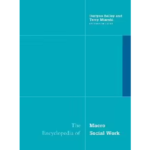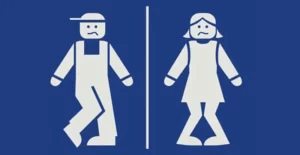Steven Soifer, Ph.D. MSW
Imagine going through life with a secret. You have difficulty urinating in the presence of others, either in public bathrooms or in your own home. This embarrassing secret limits your daily activities. Still, you have hope that you can someday overcome it. I have been working with people who have paruresis since about 1996, Having suffered from this anxiety disorder myself since the age of eleven. once I found effective treatment, I decided to dedicate myself to helping others with the problem. I co-founded
The International Paruresis Association (IPA http://www.parure-sis.org),
The Shy Bladder Center (SBC—http://www.shybladder.org), and
The American Restroom Association (ARA—http://www.americanrestroom.org).
Beyond a doubt, I have found that the most effective form of treatment for this problem is cognitive-behavioral therapy, which helps 80-90 percent of people with this issue. [ used this protocol to treat me, adopting the methods that my colleague, Dr. Jo- seph Himle, developed to treat individuals with paruresis in the early 1990s. Even though individual treatment is effective, another colleague and 1, Carl Robbins (the other co-founder of the IPA), decided to try treating paruresis in a weekend workshop format Very early in the game.
I am getting ready to do a weekend workshop in an American City. As always, I am looking forward to hearing people’s stories, which are both familiar and different at the same time. There are 12 people awaiting me at 7 p.m., looking quite anxious. This time,“Joe” talks about the time he was bullied in
Page 1
| Riding the Mutual Aid Bus and Other Adventures in Group Work |
he was bullied in the bathroom in public school. “Mary” speaks about the time she was a kid trying to use the bathroom at home, and her brothers barged in teasing her. After we finish our stories, people are already less anxious, some having told a “secret” never shared with anyone before—even spouses, significant others, or best friends. Unbelievable, I tell myself. Imagine being married for 25 years and hiding this little “fact” from your beloved. And someone never takes a vacation or has kids because of this little “secret” phobia. What a nightmare!
Saturday morning, people come prepared to “fluid load” and practice, many for the first time. To begin, I share information on the origins of paruresis, its mechanism (as we best understand it today), and typical symptoms people can experience. Paruresis, better known as shy bladder syndrome, afflicts about 7 percent of the U.S. population. Classified as a social phobia (DSM-IV-TR, 300.23), the major symptom is the fear of not being able to void in the presence of other people. It is a continuum disorder, so one person may suffer from an occasional bout that hardly interferes with his or her life, and others may become housebound because they believe that the only safe bathroom is in their own home. Paruresis afflicts men, women, and children in equal numbers. Interestingly though, probably because of the design of public restrooms, the ratio of males to females coming in for treatment is about 9:1.
Next, I explain how the graduated exposure work will go for the weekend. The whole time, people are drinking fluids (instead of the typical dehydration people with paruresis will often do in group settings), so they will be ready to practice with their peers. At 10:15, people start their first practice session. These 45-minute sessions are done in pairs or groups of three, at least for the first few practice rounds. The idea is to have people practice peeing with others around in a safe environment. The “clients” are in charge of how close someone is to them. For the men, the ultimate goal is to be able to pee with someone standing behind them in the hotel room bathroom, thus simulating the experience of being in a public bathroom with a line-up behind you. For the women, the goal is simpler: to be able to go with someone outside the hotel bathroom door, perhaps talking to her to simulate the experience of someone bothering you to use the stall in a public bathroom situation.
People gather after the first practice session, and you can feel a little excitement in the room. We debriefed the session, and “Tom” explained how he couldn’t believe he was peeing in 2 hotel bathrooms with someone else in the room. People share similar experiences, except “John,” who had difficulties. I’m going to have to work with him next round.
Page 2
| Overcoming the Secret of Shy Bladder |
Throughout the morning and afternoon, we continue this routine—practice, debriefing, and sharing with others. By the end of the day, there is some electricity in the room. People are tired, some aching physically (having drunk more water, in some cases, than ever before), but there is a lot of happiness with their personal progress. Many in the group choose to go to dinner together with people who were strangers the night before and who now feel like “best buddies.” Some, for the first time, are going out with a newly found sense of freedom. There are a lot of “happy campers” around the dinner table. People are so relaxed compared to the anxiety experienced last night.
Sunday morning at 9:00, we gather again. The mood is significantly different than it was just 24 hours before. We do a check-in. and everyone but “Tom” is palpably excited. He. unfortunately, is not doing well. He made a little progress yesterday, especially when I worked with him, but his anxiety is just too high to do this work and he is not presently on medications.
People are ready for the next phase of practice, which requires them to go out to “semi-public” bathrooms, that is. isolated hotel public bathrooms, and practice there with a group of people from the workshop. Once again, people simulate the scenes that transform In public restroom situations, and people get used to them. through graduated exposure exercises, peeing near or next to others in these situations. Again, the safety of the group makes a big difference in people being able to do things they haven’t in 5, 10, 20. or even 30 years within the course of a weekend. This is often an exhilarating experience, as people report in the debriefing later that morning. Harry exclaims, “I was able to pee next to someone at a urinal for the first time in decades!”
After an exciting Junch, the third and final stage of workshop practice begins. People are ready to practice peeing in public rest-room situations in real life. This weekend, we are practicing at the largest regional mall in the area. Having fluid loaded, and together in groups, people go into these public restrooms with the safety of their “pee-buddies” and practice going with strangers present. Participants watch me stand at a urinal not peeing for 15 minutes—and complaining about it—to see that nothing bad happens and that one can practice “not peeing in public”—that is, standing at the urinal and not peeing just to experience being in that situation and exposing himself to the feared situation. For “Jim,” this is very therapeutic, and he feels it will be an important step in his recovery.
After the last practice session, we reconvene to do a group wrap-up and also a written evaluation of the workshop. For the most part, people seem to be transformed-—from anxious, worried, and even
Page 3
| Riding the Mutua; Aid Bus and Other Adventures in Group Work |
frightened individuals on Friday, not knowing what to expect during the course of the weekend, to very happy people who experience a weight being lifted from their shoulders. The expression I use is to say that “the albatross is lifted from the neck.” People reflect that they have made positive gains, have 3 sets of practice tools to use when they go home and can continue their progress on their own or in one of the many IPA support 8roups across the globe.
In Conclusion, Group work has turned out to be a great way to treat paruresis or shy bladder. The healing power of the workshops is truly amazing to witness. After each workshop, I am literally amazed at the transformation most people have undergone during the course of the weekend. These transformational stories have sustained my work in this area throughout the years, and I expect to be conducting IPA workshops for many more years to come.
Think About it
- What is the importance of telling others your “secret” in relation to recovery?
- What added “therapeutic” effect is there in working on an issue like shy bladder in a group setting versus counseling
one-on-one? - What educational efforts can be made to inform people about stigmatized issues like paruresis?
Additional Reading
McCullough, C. (2000). Free2r- 4 self-help guide for men with pary-resis.BALTIMORE, MD. IPA.
Olmert, C. (2008). Bathrooms make me nervous: A guidebook for women with urination anxiety (shy bladder)WALNUT CREEK, CA: CJOB PUBLICATIONS,
Soifer, S., Zgourides, G., Himle, J, & Pickering, N, (2001). Shy bladder syndrome: Your step-by-step guide to Overcoming paruresis.OAKLAND CA: NEW HARBINGER PUBLICATIONS.
Typaldos, S. (2009). The Secret Phobia: Stories from the Private Lives of Paruretics, written by people with “shy bladder syndrome.”HUNTINGTON BEACH, CA: HAVEN HARBOR.










This article shines a light on shy bladder syndrome and offers hope to those who have felt isolated by this condition. The concept of a group weekend workshop provides a sense of community and understanding that can be invaluable in overcoming the challenges of shy bladder. It’s inspiring to see innovative approaches being developed to support individuals in their journey towards recovery